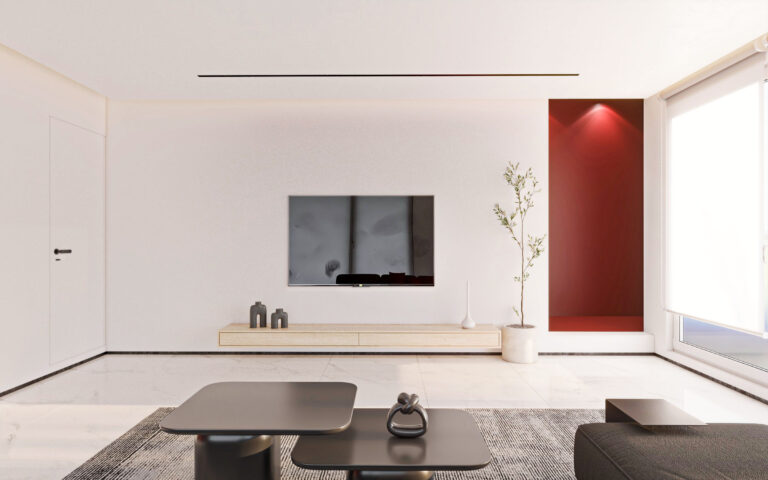
Minimalist interior design is based on the philosophy of “less is more.” This style emphasizes simplicity, functionality, and the elimination of unnecessary elements. It creates a clean, organized, and tranquil space by using neutral colors, simple furniture, and natural light.
1. Key Features of Minimalist Interior Design
- Simplicity in Form and Function – Everything in the space serves a purpose, avoiding unnecessary decorations.
- Neutral and Monochromatic Color Palette – White, gray, beige, and soft pastel tones are dominant.
- Open and Uncluttered Spaces – Minimal use of furniture and decorative items creates a spacious feel.
- Use of Natural Materials – Wood, stone, and concrete add warmth and texture.
- Maximum Utilization of Natural Light – Large windows and simple curtains enhance brightness.
- Functional and Multi-Purpose Furniture – Every furniture piece is designed to optimize space.
2. Principles of Minimalist Interior Design
2.1 Color Selection
- Neutral Colors: White, gray, beige, and soft earthy tones create a calm environment.
- Monochrome Design: Using different shades of one color maintains harmony.
- Limited Contrast: A small pop of color may be added to maintain visual interest.
2.2 Material Selection
- Wood: Adds warmth and natural beauty.
- Concrete & Stone: Used for walls, floors, and surfaces to maintain a raw, clean aesthetic.
- Glass & Metal: Enhances transparency and lightness in the space.
2.3 Spatial Organization
- Open Layout: Eliminates unnecessary partitions to create a seamless flow.
- Minimal Decoration: Avoids excessive artwork and patterns.
- Emphasis on Functionality: Each piece of furniture is practical and purposeful.
3. Furniture in Minimalist Design
- Simple and Geometric Shapes: No intricate carvings or excessive ornamentation.
- Neutral and Monotone Colors: Matching the overall space.
- Multi-Functional Designs: Sofa beds, storage-integrated tables, and foldable furniture are common.
4. Lighting in Minimalist Design
- Natural Light: The primary source of brightness, emphasized through open windows.
- Recessed & Indirect Lighting: Enhances a soft, modern ambiance.
- Minimalist Light Fixtures: Simple pendant lights or wall-mounted fixtures complement the design.
5. Advantages of Minimalist Interior Design
✔ Creates a sense of calm and relaxation.
✔ Reduces clutter and enhances organization.
✔ Maximizes space, making small areas feel larger.
✔ Promotes efficiency and simplicity in daily life.
Conclusion
Minimalist interior design offers a perfect blend of simplicity, functionality, and elegance. By focusing on neutral colors, natural materials, and open spaces, this style creates a peaceful and clutter-free environment, making it an ideal choice for modern living.


No comments yet.